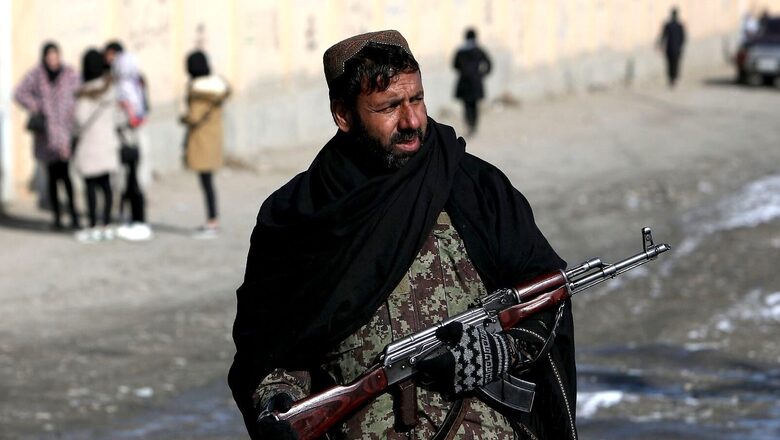
views
The Pakistani army had claimed in 2016 that it had wiped out the Tehreek-e-Taliban Pakistan (TTP) militant outfit from its stronghold, the Federally Administered Tribal Area (FATA). Five years down the line, the force is compelled to negotiate a peace settlement with that same outfit.
TTP is considered to be the largest and the deadliest militant group in Pakistan. It was formed in December 2007 as an umbrella group of 13 Taliban militant factions. Its stated goal is to defeat the Pakistan army, uproot its civilian government and establish an Islamic Caliphate in the country. The outfit wants to implement Sharia law, as interpreted by it, first in Pakistan and then in South Asia.
It follows a similar regressive pattern of Sharia law interpretation as the Afghan Taliban does, like male dominance, women as non-entities, enforced religious doctrine with no modern education, and choosing the path of violence to further its cause.
2007 TO 2014 – GENESIS OF A NEMESIS FOR FUTURE PAKISTAN
After its formation on December 14, 2007, TTP carried out as many as 12 terror attacks the same year. As per the dataset available from South Asia Terrorism Portal (SATP), the next year the outfit perpetrated 31 terror incidents, choosing civilians, security forces, and public and private investment as targets and the upcoming years only saw these attacks increasing manifold.
Data wise, 2007 to 2014, before ‘Operation Zarb-e-Azb’ was started, can be seen as the TTP’s peak years.
In these seven years, the outfit carried out at least 1,022 terror incidents, killing 1,848 civilians and 891 security personnel, i.e., on an average 128 terror incidents a year killing 231 civilians and 111 police personnel.
These attacks were spread across Pakistan with the TTP having its chapters in all of the country’s four provinces headed by local-level commanders. The outfit’s strikes include the assassination of former prime minister Benazir Bhutto on December 27, 2007, just within 2 weeks of its formation, and shows the kind of terror nemesis Pakistan was going to face in the future.
ZARB-E-AZB AND RADD-UL-FASAAD
To bring the TTP down, the Pakistan army started ‘Operation Zarb-e-Azb’ (means ‘sharp and cutting strike’) on June 15, 2014, in North Waziristan, a district now in the defunct FATA, the TTP stronghold. FATA was merged with Khyber Pakhtunkhwa on May 31, 2018.
The operation in an area alongside the Pakistan-Afghanistan border ran for nearly two years. The Pakistan army claimed it killed 3,500 militants in the operation while losing 490 of its soldiers. The additional support came from the consistent drone strikes by the US. Though there is no information available on how much the Pak army spent on the mission, after one year of the operation, the country’s foreign office informed that $1.9 billion had been used in the exercise thus far.
The big claim made then was that the militants were totally wiped out from the territory and the Pakistani army, in fact, had reached the Afghanistan borders, claiming overall domination, as stated by military spokesman Lt Gen Asim Bajwa on June 15, 2016.
On February 22, 2017, the Pakistan army launched yet another exercise, ‘Operation Radd-ul-Fasaad’ (elimination of discord) after the country again witnessed an increase in terror activities, as claimed by the force’s press release. The aim was to eliminate the “residual/latent threat of terrorism”, and to extend on the gains already made in earlier military operations like ‘Zarb-e-Azb’. Radd-ul-Fasaad is still an ongoing operation and completed five years on February 22 this year.
Data-wise, these military operations dramatically brought down TTP attacks in Pakistan. From 2015 to 2020, terror incidents significantly dropped to 242, or an average of 40 terror incidents a year. 361 civilians were killed and 271 security personnel lost their lives in these six years. 2020, in fact, saw just five terror attacks by the TTP, killing two civilians and a security personnel.
The TTP in these six years saw many of its top leaders killed, many of its militants leaving to join other groups, finances battered, and many of its fighters fleeing.
MISCALCULATION AND RESURGENCE
According to a May 2022 report by the UN Security Council Monitoring team on Afghanistan, the TTP has several thousand fighters in that country and is determined to have a long-term campaign against the Pakistani establishment. “TTP has arguably benefited the most of all the foreign extremist groups in Afghanistan from the Taliban takeover. It has conducted numerous attacks and operations in Pakistan,” it said.
It’s true that terror attacks significantly came down, as evident from the data available, but it is just one side of the story. The TTP’s overall organisational strength is much bigger than the number of 3,500 militants killed by the Pak army. So, the threat was already there. It just disappeared.
According to an estimate of the ‘Military Balance’, the TTP had around 25,000 fighters in 2012. It came down to 2,000 fighters in 2018 as per an estimate by RUSI. It means most of them shifted temporarily to Afghanistan. According to a December 2021 estimate by the Washington Post, the TTP’s Afghanistan strength is around 10,000 soldiers while as per SATP figures, the outfit currently has an overall strength of 30,000 to 35,000 fighters.
The TTP is backed by the Afghan Taliban and when the Pakistan army started military operations against it, it chose to shift its base to Afghanistan. There it became part of the Taliban offensive against the coalition forces and Afghanistan’s civilian government.
The Taliban had never accepted the regime change in the country and vowed to fight back from their bases in Pakistan and shelters in Afghanistan. Slowly, year-wise, their pace of attacks increased and by 2018, the outfit had regained significant influence back to a larger extent.
Forced by the increased Taliban offensive and a desire to leave Afghanistan as soon as possible but finding no way out, the US, under President Donald Trump, appointed veteran Afghan-American diplomat Zalmay Khalilzad to negotiate with the Taliban in 2018. The US-Taliban peace deal was signed on February 29, 2020, leading to the Taliban taking over the country by August 2021.
The Taliban victory was a big confidence booster for the fighters of the Afghan Taliban, the Haqqani Network, and the TTP. Also, the Taliban victory meant it was payback time for TTP.
And soon, they were back in the game, naturally with Afghan Taliban support. The first step was reuniting with their splinter groups. It happened easily with the support of the Afghan Taliban, al-Qaeda, and the Haqqani Network. Next was to increase their terror operations across the border and shift their base back to Pakistan.
2021 saw TTP attacks rising to 33, a steep jump from 5 terror attacks in 2020, killing six civilians and 8 security personnel. This time the TTP has decided to take a different approach. The outfit says it will not target any civilians. Instead, it is targeting the Pak military and its security personnel and Chinese investments in the country under the China-Pakistan Economic Corridor (CPEC). Eight attacks by the TTP this year have not killed any civilians so far.
Read all the Latest News , Breaking News , watch Top Videos and Live TV here.




















Comments
0 comment